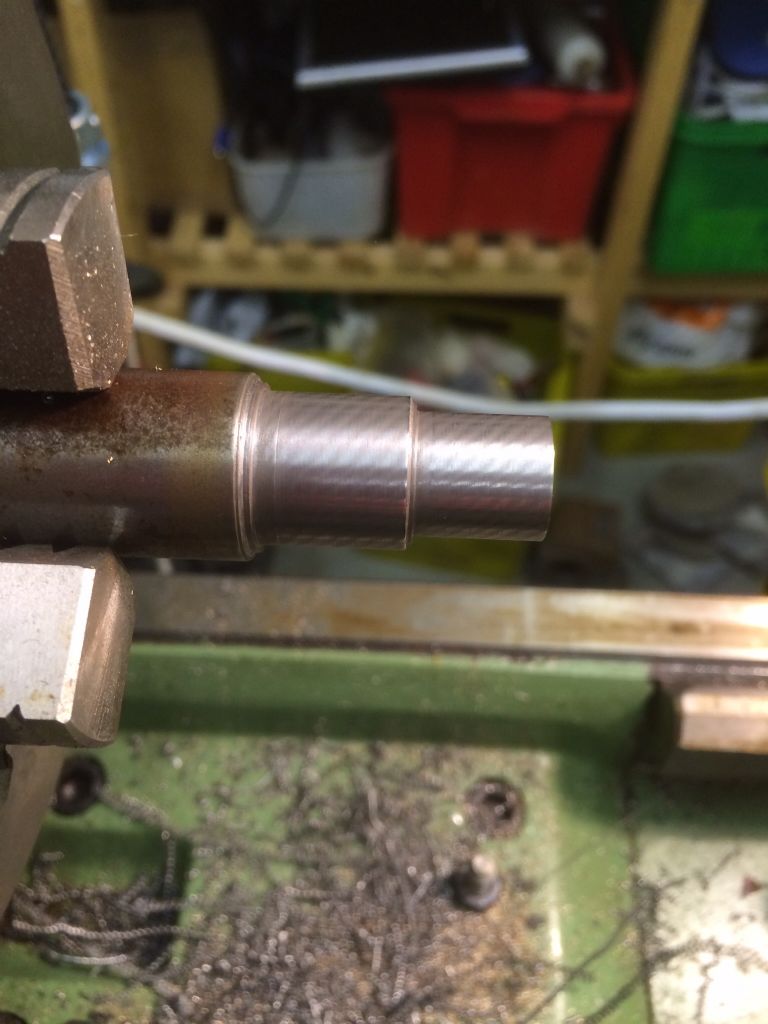Thanks again guys for all the suggestions. Further to my phone call to Warco last week it was suggested that I tried turning something between centres to see if the pattern was replicated using that turning method. So, with that in mind I set aside Saturday afternoon for a play. I started by fitting the new 5-3mt reducer into the cleaned headstock taper and then fitted a brand new centre into the reducer. On turning on the lathe there was a visible wobble at the tip of the centre, my DTI registered a run out of 0.005" so I set over the top slide and skimmed the centre until it was running true. I have a centre drilled & surface ground test bar which I put between centres to check the tailstock alignment. Applying the DTI to the top of the bar highlighted that the tail stock centre is higher than the headstock, rising by 0.003" over 6" of travel towards the tailstock, not sure what I can do about that but that's another problem for another day.
Anyway, whilst the DTI was set up, I decided to mount it at the rear of the test bar and check for any movement of the needle as I ran the lathe at its slowest speed, happily there was only a barely perceptible movement of the needle, well below 0.001". I then decided to apply powered feed ( 0.003"/rev) to the carriage to mimic the path of the tool and immediately the DTI needle went crazy showing deflections of around 0.010-0.015" so rapidly that the needle was almost a blur. Disengage power feed and the deflection stopped, feeding the carriage manually caused the needle deflections again, infact just turning the carriage hand wheel to the point of taking up any backlash without actually moving the carriage gave the same result.
It appears to me that the motor is causing a severe vibration which is somehow transferring to the carriage when it is set in motion. By this time I had run out of available spare time to continue experimenting but have in mind to check the saddle gib adjustment again and perhaps to remove the motor belt completely and see if the problem replicates with just the motor running on its own. I am not sure that this phenomenon would cause the helix pattern on the work but it does seem a step in the right direction! Any comments would be gratefully received!
Regards, Martin.
Neil Lickfold.



 but as per this PM thread:
but as per this PM thread:

